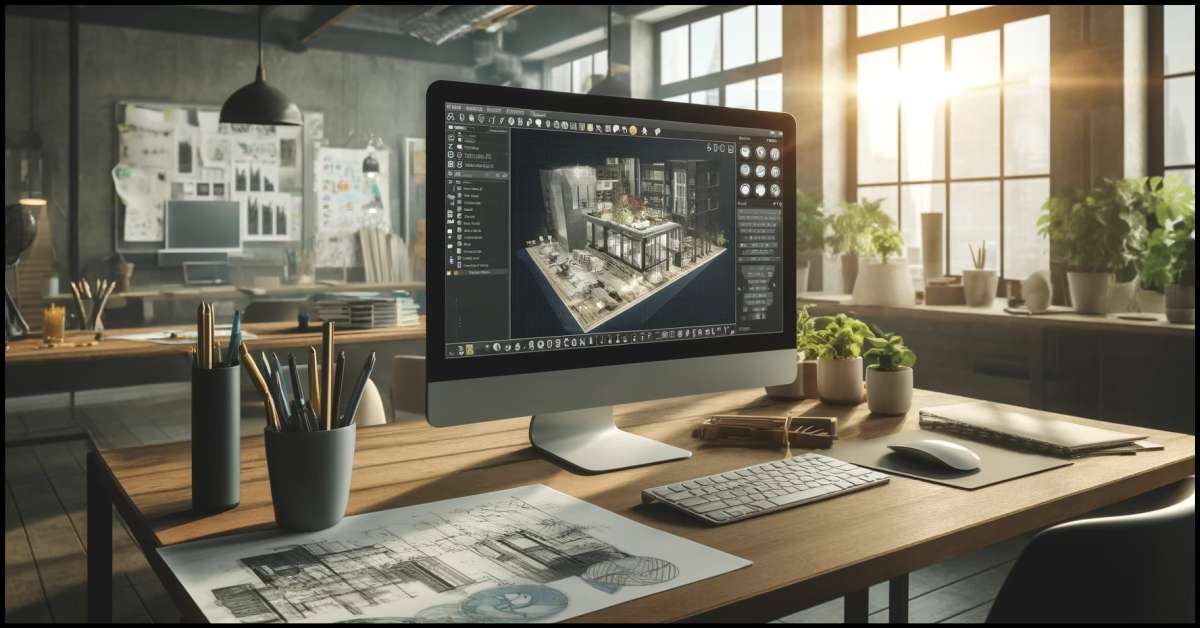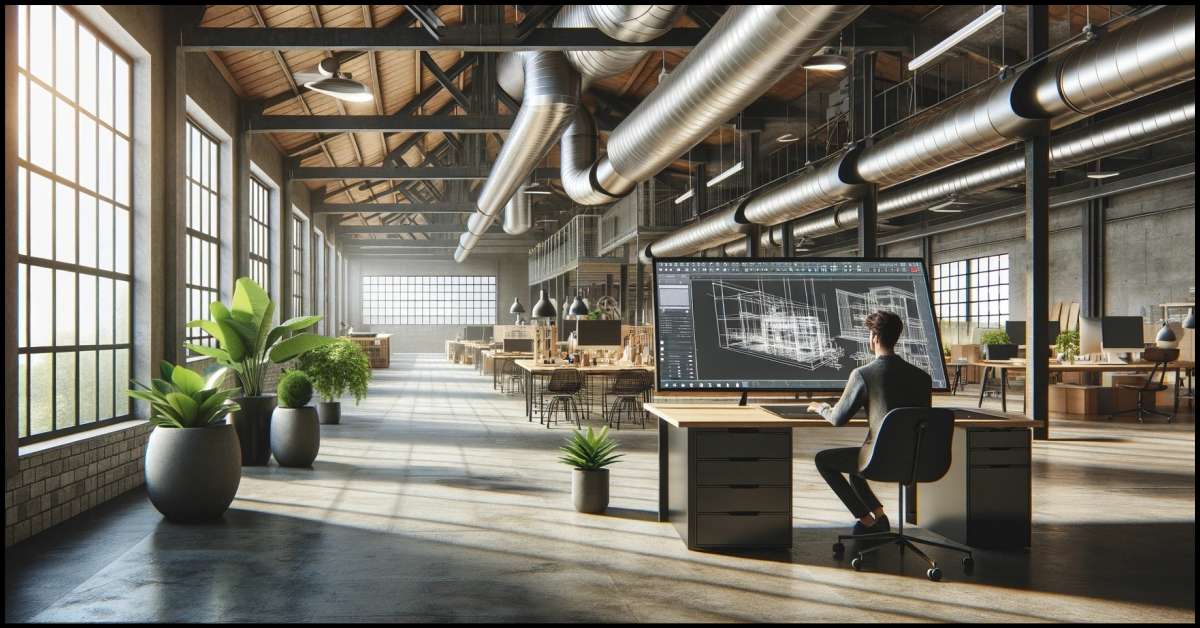In the rapidly evolving landscape of Computer-Aided Design (CAD), open-source platforms like TinkerCAD and FreeCAD have emerged as pivotal tools, democratizing access to sophisticated design capabilities for professionals and hobbyists alike. This article delves into the historical development of CAD software, highlighting the significant shift towards open-source solutions that offer robust features comparable to proprietary software. We analyze the comprehensive functionalities of TinkerCAD and FreeCAD, illustrating their impact on the industry through case studies and usage scenarios.
The discussion extends to the economic implications and future trends driven by these platforms, including the integration of AI and machine learning technologies. By examining the challenges and potential of open-source CAD, this article aims to provide insights into its role in transforming the design process and its increasing adoption across various sectors.
By Samareh Ghaem Maghami, Cademix Institute of Technology.
Introduction
In the ever-evolving world of design and engineering, the tools we use can significantly shape the outcomes of our creative endeavors. Computer-Aided Design (CAD) has long been at the forefront of this transformative process, offering precision and efficiency previously unattainable with traditional drafting methods. As we venture further into the digital age, the emergence of open-source CAD software such as TinkerCAD and FreeCAD marks a pivotal shift in how these tools are developed, accessed, and utilized across the globe.
Open-source platforms have democratized the field of design, making powerful software accessible to everyone from students and hobbyists to professional engineers and architects. By analyzing the trajectory of CAD tools and the impact of these accessible platforms, we can better understand their role not just in simplifying design processes but in democratizing innovation itself. This article explores the evolution of CAD, with a particular focus on how TinkerCAD and FreeCAD are reshaping the industry by making design tools more accessible and adaptable to users’ needs, thus fostering a new era of creativity and collaboration.
What is Open-Source CAD?
Open-source software, a concept that revolutionized the tech industry, is built on the principle of collaboration and free access. This model allows developers to view, modify, and distribute software without cost, fostering an environment of innovation and continuous improvement. In the realm of Computer-Aided Design (CAD), open-source platforms have gained substantial traction, challenging traditional, proprietary CAD tools with their accessibility and feature-rich capabilities.
Definition and Core Principles
Open-source CAD refers to CAD tools that are publicly available without licensing fees, where the source code is open for anyone to use, modify, and distribute. This approach not only reduces costs but also encourages a community-based development model where users from around the globe contribute to the software’s development, ensuring a diverse range of features and rapid bug fixes.
Advantages of Open-source CAD Tools
The benefits of using open-source CAD tools are manifold. Primarily, they eliminate the high costs associated with proprietary software, making them particularly appealing to students, hobbyists, and professionals in developing countries. Moreover, they offer flexibility in customization, allowing users to tailor the software to their specific needs. This adaptability makes open-source CAD an excellent choice for specialized projects that require unique toolsets that might not be available in commercial software.
The strength of open-source software lies in its community. Open-source CAD programs like TinkerCAD and FreeCAD are supported by vibrant communities of users and developers who actively participate in forums, contribute to the software’s enhancement, and provide support to fellow users. This community-driven model ensures that the software is not only up-to-date but also aligned with the users’ evolving needs.
Historical Development of CAD Software
The evolution of Computer-Aided Design (CAD) software is a tale of innovation and transformation that has significantly influenced the fields of engineering, architecture, and design. From its inception in the 1960s to the present day, CAD technology has evolved from basic 2D drafting systems to complex 3D modeling applications, shaping the way professionals conceptualize and realize their designs.
Early Beginnings and Milestones
The journey of CAD began with the development of simple drawing programs, which gradually expanded in functionality to include 3D modeling and simulation capabilities. Notable early systems like AutoCAD set the standard for design software, offering tools that significantly increased precision and efficiency in drawing and drafting. As technology advanced, CAD systems became more sophisticated, incorporating new technologies such as real-time rendering and parametric modeling, which allowed for more dynamic and flexible design processes.
Amidst these advancements, a parallel shift was occurring with the rise of open-source platforms in the late 1990s and early 2000s. Projects like FreeCAD began to challenge the dominance of proprietary software by offering no-cost alternatives that continued to embrace and drive innovation. These platforms were not only developed through the efforts of individual hobbyists but also by collaborations among academic institutions and industries seeking to reduce software expenditure while maintaining high flexibility in customization.
Community Contributions to CAD Development
The unique aspect of open-source CAD tools is their development model, which relies heavily on user contributions from around the world. This has led to a diverse range of features and continuous improvements, tailored to meet the specific needs of various industries. Community-driven development ensures that the software remains relevant and adapts quickly to new design trends and technologies.

TinkerCAD: Making CAD Accessible
TinkerCAD, an open-source CAD tool, has become a pivotal platform in making the technology accessible to a broader audience, including students, educators, and hobbyists. It simplifies the entry into the world of CAD, offering a user-friendly interface and basic tools that allow for quick learning and immediate application in various projects.
Overview of TinkerCAD
TinkerCAD is designed with simplicity and ease of use in mind, catering primarily to newcomers and those with minimal technical background. The platform operates entirely online, requiring no software installations, which makes it easily accessible from any device connected to the internet. Its intuitive drag-and-drop interface facilitates the creation of 3D models from simple shapes, making it an ideal tool for educational purposes and initial forays into digital design.
Democratizing Design
The core mission of TinkerCAD is to democratize the design process, making it possible for anyone with a computer and internet access to start creating and learning about 3D modeling. This accessibility has proven particularly beneficial in educational settings, where teachers incorporate TinkerCAD into their curricula to enhance students’ spatial thinking and problem-solving skills. It also serves as a gateway for hobbyists to experiment with 3D design, which can be particularly useful in DIY projects and maker activities.
Case Studies and Examples
Highlighting several case studies where TinkerCAD has been effectively used can illustrate its impact. For instance, a middle school might use TinkerCAD for a class project to create simple household items, teaching students about basic design principles and the engineering design process. Another example could involve hobbyists using TinkerCAD to design custom parts for model trains, showcasing the tool’s utility in crafting detailed and personalized components.
A Tool for Professionals and Hobbyists
FreeCAD, unlike TinkerCAD, targets a more diverse audience by offering capabilities that appeal to both professional designers and hobbyists. This open-source platform provides a robust set of tools that enable users to engage in everything from simple projects to complex engineering tasks.
Exploration of FreeCAD’s Capabilities
FreeCAD is a parametric 3D modeler built to design real-life objects of any size. Modular in design, it allows users to install plugins and add-ons for specialized tasks, making it highly customizable. It supports a variety of engineering disciplines, including mechanical engineering, architecture, and product design. FreeCAD’s parametric modeling capability means that changes can be made to components and assemblies without starting from scratch, thereby streamlining the design process.
Comparison with Industry Standards
In comparison to industry giants like AutoCAD, FreeCAD offers a no-cost alternative that holds its ground in terms of functionality for certain applications. While it may not yet replace AutoCAD for high-end professional work fully, FreeCAD provides sufficient capabilities for the majority of CAD users, particularly those involved in mechanical and architectural design. Its open-source nature also means that improvements and new features are continually being developed by the community, enhancing its competitiveness and utility over time.
Professional Use Cases
Professionally, FreeCAD has been employed in various industries for tasks ranging from the design of mechanical components to the planning of architectural projects. Examples include creating detailed parts for manufacturing within the mechanical engineering field or architectural renderings for client presentations. FreeCAD’s ability to handle complex calculations and provide detailed technical drawings makes it an invaluable tool for professionals looking to reduce software costs.
The Impact of Open-Source CAD on the Industry
The adoption of open-source CAD tools like TinkerCAD and FreeCAD has significantly reshaped the landscape of the design industry. These platforms not only provide free access to powerful design tools but also foster a culture of innovation and collaboration that drives the industry forward.
Changing the Landscape of Design
Open-source CAD tools have democratized access to design capabilities, enabling individuals and small businesses to compete on a level playing field with larger corporations. This accessibility has spurred innovation across various sectors, allowing for more rapid prototyping, experimentation, and personalization of projects. By reducing the barriers to entry, open-source CAD tools have expanded the design community, bringing in a diversity of perspectives and skills that enrich the entire ecosystem.
Economic Impact
The economic implications of open-source CAD are profound. By eliminating the high costs associated with proprietary CAD software, open-source tools have allowed businesses to allocate resources more efficiently, investing in other areas such as research and development, marketing, and staff training. For individual designers and small firms, the savings on software expenses can be transformative, enabling them to undertake projects that were previously out of reach due to budget constraints.
Future Trends Influenced by Open-Source CAD
The future trajectory of CAD software is likely to be heavily influenced by the principles of open innovation inherent in open-source projects. Trends indicate a move towards more integrated platforms that not only cover CAD but also extend to computer-aided manufacturing (CAM) and computer-aided engineering (CAE). The community-driven development model typical of open-source software promises a more responsive and rapidly evolving set of tools, tailored to meet the emerging needs of users in real time.

Challenges Facing Open-Source CAD
While open-source CAD tools like TinkerCAD and FreeCAD offer numerous advantages, they also face specific challenges that could impact their effectiveness and widespread adoption. Understanding these challenges is essential for users considering open-source solutions and for the community that develops and supports these tools.
Technical Limitations and Performance Issues
One of the primary concerns with some open-source CAD programs is that they may not always match the performance and advanced features of their proprietary counterparts. For instance, users might encounter limitations in rendering speeds, file compatibility, or the handling of extremely complex projects. These issues can pose significant obstacles for professionals whose work demands high precision and reliability.
Support and Documentation
Unlike commercial software that comes with extensive technical support and detailed documentation, open-source tools often rely on community forums and user-contributed manuals. While these resources can be incredibly valuable, the variability in their quality and the responsiveness of community support can be challenging for users who require immediate and professional assistance.
Sustainability of Development
The development of open-source software heavily depends on the voluntary contributions of its community. This can lead to unpredictability in the maintenance and advancement of the software. Without a steady flow of updates or management of the software code, there can be periods of stagnation or uneven quality in new releases.
Community Engagement
The strength of an open-source project lies in its active community. However, sustaining this engagement over time can be challenging. Without adequate participation, projects can struggle to evolve. Encouraging consistent contribution and managing a diverse group of volunteers across different time zones and languages can be a complex task for project leaders.
Future Directions and Technologies in CAD
The future of Computer-Aided Design (CAD) is poised to be shaped significantly by advancements in technology and the evolving needs of industries. Open-source platforms like TinkerCAD and FreeCAD are at the forefront of this transformation, potentially leading the integration of cutting-edge technologies that can expand their capabilities and application areas.
Emerging Technologies in CAD
The integration of artificial intelligence (AI) and machine learning (ML) into CAD systems is one of the most promising directions for future development. These technologies can automate routine tasks, enhance the accuracy of models, and optimize design processes. For example, AI can predict user design patterns and assist in creating more efficient workflows, while ML algorithms can improve the structural analysis of models by learning from a vast array of data points.
The Role of Open-Source in Technology Advancement
Open-source platforms are particularly well-suited to innovation because they allow for rapid prototyping and testing of new ideas by a global community of developers. This collaborative environment accelerates the pace of technological integration and adaptation, making open-source CAD a testbed for new technologies. As these platforms continue to mature, they will likely play a crucial role in standardizing new functionalities and ensuring that advanced tools are accessible to a wider audience.
Virtual Reality (VR) and Augmented Reality (AR) in CAD
Another exciting area of development is the use of VR and AR within CAD systems. These technologies can transform how designers interact with their models by enabling them to step inside virtual simulations of their creations. This can be particularly beneficial in fields like architecture and product design, where a spatial understanding of complex structures is crucial.
Sustainability and Eco-Design
With growing concerns about environmental impact, sustainability has become a critical focus in all areas of production, including CAD. Open-source CAD platforms can lead the way in incorporating eco-design principles that help users create more sustainable and resource-efficient models. Features like material optimization algorithms and environmental impact assessments could become standard in future CAD tools, helping designers make more responsible choices.
Conclusion
As we have explored throughout this article, open-source CAD platforms like TinkerCAD and FreeCAD are more than just free alternatives to proprietary software. They are catalysts for innovation and democratization in the design industry, breaking down barriers that once limited access to advanced design tools. By fostering an inclusive community of users and developers, these platforms ensure that the benefits of CAD technology are accessible to a broader audience, from students and hobbyists to professionals across various fields.
The impact of TinkerCAD and FreeCAD on the industry cannot be overstated. These tools have enabled countless individuals to engage with CAD technology, nurturing a new generation of designers who are versed in the principles of digital modeling and open-source collaboration. The economic implications are equally significant, as open-source CAD allows for more efficient allocation of resources, lowering the entry threshold for small businesses and independent designers.
Call to Action
We encourage readers to explore the possibilities offered by TinkerCAD and FreeCAD. Whether you are a seasoned designer, a student, or a curious hobbyist, engaging with these platforms can expand your design skills and contribute to the vibrant community that shapes these tools. Links to download the software and join community forums are available on their respective websites, inviting you to become part of the ongoing evolution in CAD technology.
In conclusion, the future of CAD is open and inclusive, driven by a community of innovators who are not only users of the technology but also its creators. Open-source CAD platforms stand at the forefront of this revolution, promising a future where design tools are accessible to everyone and limited only by the imagination.

About the Author
Samareh Ghaem Maghami is a distinguished master’s student in eco-design at FH Wiener Neustadt, Austria, with a rich background in painting and a robust history of professional experience in interior decoration and event management. Her comprehensive expertise and dedication to fostering sustainable design practices make her a pivotal voice in the discourse on eco-friendly design innovations. Interested parties seeking collaboration or wishing to learn more about her work are encouraged to contact Samareh to explore potential synergies and contributions to sustainable design solutions.
She is also an Associate Technical and Interior Designer at Cademix Institute of Technology and a member of the Cademix Career Autopilot Program.
Please feel free to contact her under:
E-mail: sam.gh.maghami@gmail.com
E-mail: samareh.ghaem-maghami@cademix.org
LinkedIn: https://www.linkedin.com/in/samareh-ghaem-maghami
Xing: https://www.xing.com/profile/Samareh_GhaemMaghami

